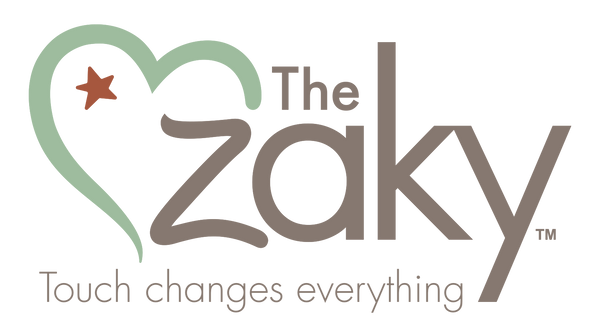The Zaky ZAK is designed to implement Kangaroo care with babies 1-14 lbs that have the green light to be held. It keeps the mom comfortable and the babies safe, well positioned, supported, and warm so babies are held skin to skin as long as possible, as uninterrupted as possible, and as frequent as possible as recommended by AAP. Here is a poster with some of the science behind Kangaroo Care:
The Science Behind Kangaroo Care
By Yamile Jackson, PhD, PE, PMP and Barbara Weaver, CCRN
Sponsored by Nurtured by Design

Benefits for the parents include:
- Enhanced attachment and bonding (Tessier et al., 1998).
- Resilience and feelings of confidence, competence, and satisfaction regarding baby care (Tessier et al., 1998; Conde Agudelo, Diaz Rossello, & Belizan, 2003; Kirsten, Bergman, & Hann, 2001).
- Increased milk volume, doubled rates of successful breastfeeding and increased duration of breastfeeding (Mohrbacher & Stock, 2003).
- Physiologically her breasts respond to her infant's thermal needs (Ludington-Hoe et al., 2006).
- Profoundly beneficial for adoptive parents with critically ill preterm infant (Parker L, Anderson GC. , 2002).
Benefits for the babies include:
- Kangaroo Care reduces neonatal mortality (Conde-Agudelo et al, 2011).
- Less incidence and severity of infection (Charpak N, Ruiz-Pelaez JG, Figuero de Calume Z, Charpak Y., 1997).
- Accelerated autonomic and neurobehavioral development (Feldman R, Eidelman, 2003).
- Promotes self-regulation in premature infants: sleep wake cyclicity, arousal modulation, and sustained exploration (Feldman R, Weller A, Sirota L, Eidelman A., 2002).
- Consistently high and stable oxygen saturation levels, lower airway resistance, fewer apnea episodes, and an increased percentage of quiet sleep (Ludington- Hoe, Ferreira, & Goldstein, 1998).
- Stable temperature within normal thermal zone, heart rate, and respiratory rate (Ludington-Hoe et al., 2010).
- Reduced crying associated with painful procedures (Kostandy R, Ludington-Hoe SM, 2008).
- Breast milk is readily available and accessible, and strengthens the infant's immune system.
- The maternal contact causes a calming effect with decreased stress and rapid quiescence (McCain, Ludington-Hoe, Swinth, & Hadeed, 2005; Charpak et el., 2005).
- Reduced physiological and behavioral pain responses (Ludington-Hoe, Hosseini, & Torowicz, 2005).
- Increased weight gain (Charpak, Ruiz-Pelaez, & Figueroa, 2005).
- Enhanced attachment and bonding (Tessier et al., 1998).
- Positive effects on infant's cognitive development (Feldman, Eidelman, Sirota, & Weller, 2002).
- Less nosocomial infection, severe illness, or lower respiratory tract disease (Conde-Argudelo, et. al., 2003).
- Restful sleep (Ludington-Hoe et al., 2006).
- Earlier hospital discharge (London et al., 2006).
- Possible reduced risk of sudden infant death syndrome (SIDS) (see www.infactcanada.ca).
- Normalized infant growth of premature infants (Charpak, Ruiz-Pelaez, & Figueroa, 2005).
- May be a good intervention for colic (Ellett, Bleah, & Parris, 2002).
- Possible positive effects in motor development of infants (Penalva & Schwartzman, 2006).
- The critical stimuli to which the baby is exposed during KC are:
Vestibular: the chest movement of the breathing of the parent, and walking if allowed
Tactile: the skin and natural warmth of the parent on the bottom (chest), on the sides (breast of mother), and the back (The Zaky ZAK™)
Olfactory: the scent of the parent and the maternal breast milk.
Auditory: by the voices and heartbeat of the parent.

